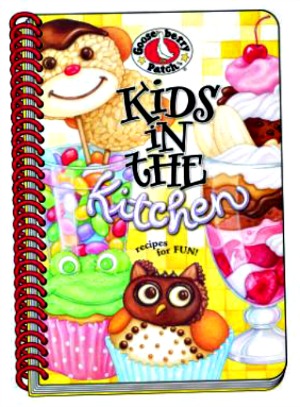If you’re thinking of ways to turn daily cooking into educational lessons for your children,
you don’t have to look far — the educational aspect is practically built in.
Subjects used in a practical way involve not only the obvious (like mathematics, reading and science), but also history, time management and creativity.
You also have the opportunity to teach your children about nutrition and healthy eating, in a natural, fun way. And studies have shown that activities that feel natural are the ones most likely to create habits — an important shift that can make the difference between obesity in later life and a healthy, fit body.
Let’s take a look at what’s involved…
What You’re Really Teaching
* Mathematics — Addition and subtraction are a natural part of cooking, especially when you double or half recipes to fit the number of people you’re planning to serve. Cooking also involves working with measurement systems — for example, a child will quickly learn how to convert ounces to milliliters if you have measuring cups and spoons in your cupboards and drawers displaying both systems.
* Reading — Accuracy is essential in cooking so reading extra-carefully through the recipes helps ensure success. There are some delightful cookbooks for younger children designed to assist them with reading, simplifying processes and ingredients and prompting them with imagination-stimulating pictures.
* Science — We’ve already mentioned teaching children conversion between the U.S. and metric measurement systems through cooking, but there’s more to science and cooking than that. You can teach them about food safety (bacteria, washing and storage.) And chemical reactions between ingredients can not only instruct, but entertain kids. (Try foods that suddenly fizz or change color with the addition of a simple ingredient.)
* History — One excellent way to stay in touch with your roots lies in teaching children traditional recipes; either those handed down in your family, or from your ethnic heritage. As you prepare the recipes, for example, you can reminisce about grandparents or great-grandparents and their challenges or daily lives in another country (and another world). You can teach social history lessons by talking about differing expectations or rules in “the old days” as you prepare the food. You can also make ancient history seem immediate and alive by talking, for example, about honey found in the tombs of Egyptian pharaohs as you are actually spooning honey into a recipe.
* Time Management — Through cooking, children learn basic time management and multi-tasking skills. They learn to organize ingredients in such a way that everything flows smoothly, and this magical flow can feel rewarding in itself (and become a way of thinking).
* Creativity — There is nothing more creative than putting together a meal and making it fun, nutritious and visually appealing. Giving children a choice of garnishes or ingredients can really stimulate their creativity; as can the kinesthetic “touch” element of cooking itself. Playing with ingredients or decorating a cake becomes an art lesson as you explore color and texture together. And you can make play dough or bath bombs from recipes, rather than just food. (Encourage your children to try unusual combinations of ingredients, with the emphasis not on success but on curiosity and exploration.)
In short, cooking sets children up for success in a natural, fun way; building confidence; teaching practical lessons; endowing important life skills — and immediate rewards.